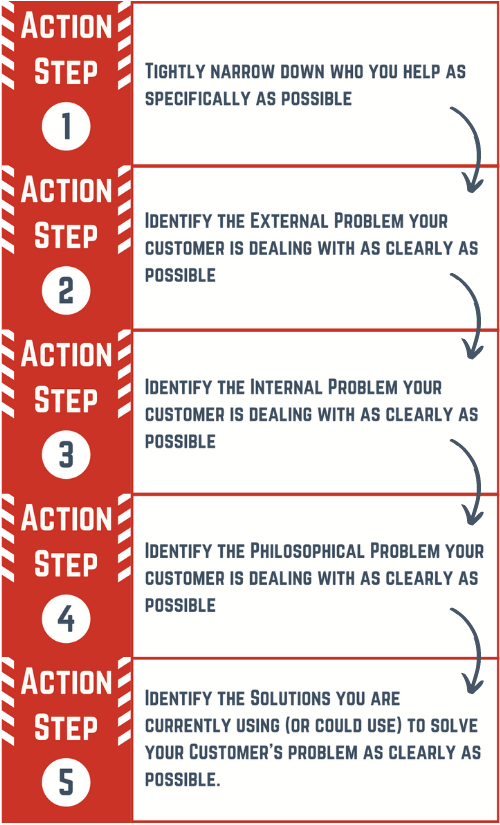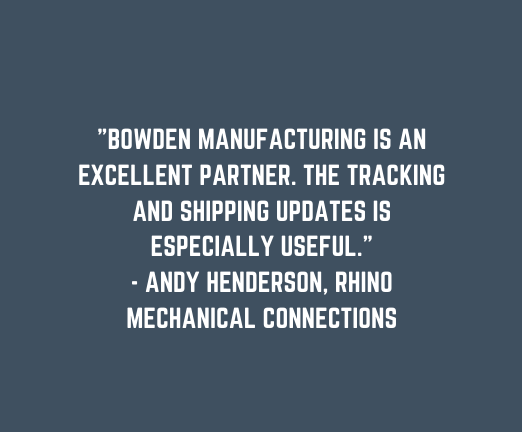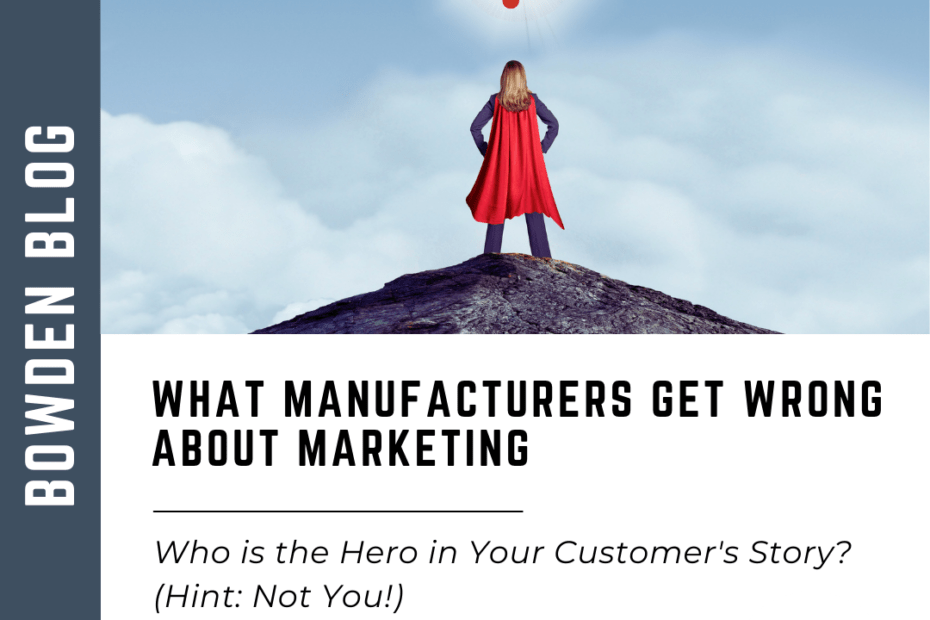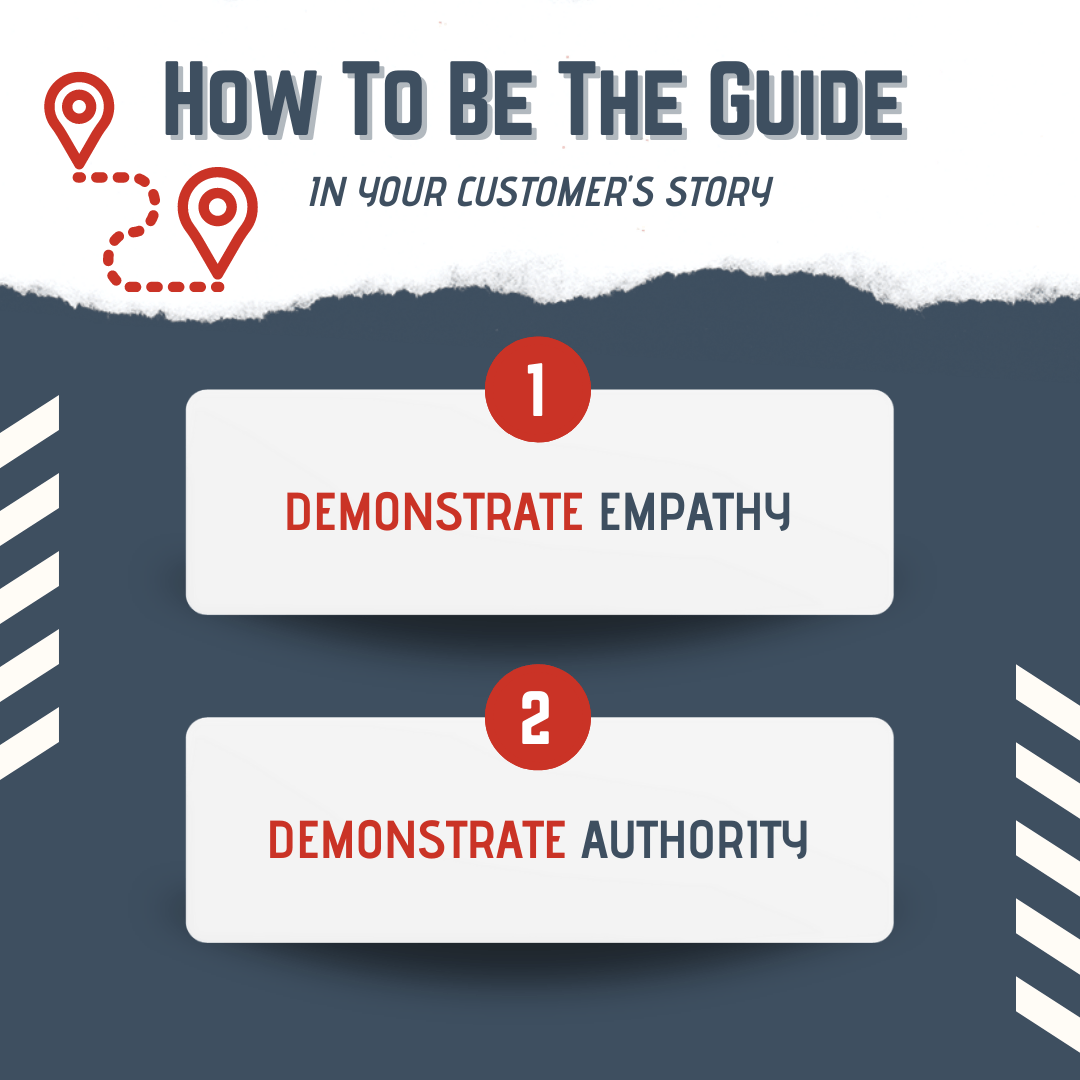Part 2 of 4
When Marketing Your Manufacturing Business, Do You Know Who Should be the Hero of the Story?
(Hint: It’s Not You!)
If we look at your Company website and ask the question “Who is the Hero of this story?” the answer is usually both obvious and wrong. The answer is often that your Company is the Hero of the story, and yes, that’s the wrong approach to Market your Manufacturing business.
Last week, we started this four-part series on applying Donald Miller’s book, Building a StoryBrand, to Manufacturing companies. Using the StoryBrand framework, we have overhauled the way we speak about our company and how we reach out to the marketplace. Hopefully, this series will help you skip some of the mistakes we made along the way.
If you completed the 5 Action Steps from last week’s blog, you completed the following actions:

This week we are going to explore one of the biggest ideas in the StoryBrand framework. The idea is that you need to position yourself as the Guide in the story.
Your Company is the Guide
There are four main Roles to be played in almost every compelling story that you see in movies, books, or on TV:
- The Hero
- The Villain
- The Victim
- The Guide.
We certainly don’t want to play the Victim or the Villain, that’s obvious.
Last week, without really talking about it, we positioned the Customer as the Hero in the Story. The reason the Story is interesting and captures attention is that the Hero has a Problem. The Problem is the hook that makes the Story interesting. The part we didn’t talk about last week, but becomes extremely important now, is that in positioning the Customer as the Hero, we want to position ourselves as the Guide. The Guide has “been there, done that” and is now positioned perfectly to help the Hero win the day. In this case, we’re here to help the Hero (the Customer) Solve the Problem they are facing (win the day!).
By using the work from last week, your prospective Customer is starting to get interested. You broke through the clutter by clearly describing the problem that he has and he’s hoping that you’ll have a solution for him. You are now set up in the perfect spot to help and you will assume your role as their Guide.
Be Your Customer’s Guide Part 1: Demonstrate Empathy
In the Building a StoryBrand framework, the first way to position yourself as the Guide, is to demonstrate Empathy for the Customer’s position.
There are several ways to do this and you’ve started the process in the previous steps by clearly identifying the External, Internal & Philosophical Problems that they are trying to solve.
Let your Customer know that you know what it’s like to be facing those Problems and the feelings associated with them. You can use phrases like:
- “We know what’s it like to deal with……”
- “In the past, we had to deal with the challenges of……”
- “When we were faced with that situation, it made us feel……”
One major key to these statements is that while you, as the Guide, empathize with the situation the Hero is facing, you talk about your experience of those challenges in the past tense. This distinction will be more important in the next section.
Here’s an example of what we uncovered for ourselves to establish our role as the Guide by demonstrating Empathy for our Customer’s position straight from our website:
- “We understand the pressure you’re under to produce on time and on budget.”
- “We know how difficult it can be to coordinate manufacturing projects, even when you’ve got good information, and too many vendors keep their customers in the dark.”
- “We know that fulfilling an order can be more difficult than winning a job.”
- “The thought of taking extra time for Lean Manufacturing, Kaizen events, or other Continuous Improvement activities can seem crazy.”
- “Making things come to life can be a lot more difficult than most people understand.”
In the previous blog in this series, we discussed the first 5 action steps to take to achieve marketing success. We are going to continue those action steps now.
- Start with the Problems you identified your Customer is facing, and let them know you understand how they feel
- Make sure that all the statements reflect that you’ve experienced their problems and situation in the past, not the present.
Be Your Customer’s Guide Part 2: Demonstrate Authority
The next step to positioning yourself as the Guide is to demonstrate the Authority to solve the Customer’s problems.
Establishing Empathy is a psychologically important step because Customers (and all of us!) want to feel heard and understood. You want to make sure your Customer knows that you have been in their spot and overcome these problems, so they’ll believe you can help them overcome what they are facing.
Once you’ve got them psychologically open to listening, now you can establish your Authority to help them on their path to winning the day.
There are several important ways to do this:
- Assurances & Positive Statements of Customer Outcomes
- Social Proof (Notable Customers, Customer Testimonials, Statistics of Success, Reviews, etc.)
- Awards, Certifications, or Accreditations
After creating Empathy for the Customer’s situation in the previous step, you’re now in a position to assure them that you’re here to help them solve their problems and help them win the day. It’s important to talk about the expected positive outcomes they’ll be able to get, but it’s just the start.
Social proof from past Customers is a huge part of establishing your Authority. The ideal testimonial is brief, states the problem the Customer faced, that you helped them get the problem solved and that they’re now in a much better spot as a result.
You can add further social proof if your products get online reviews, or if you have statistics that show measurable results from Customers that have used you to solve their problems.
Finally, if you’ve received any Awards, Certifications, or Accreditations that are related to your ability to solve the problems of the customers, those can add to your Authority.
One pro tip – make sure you don’t overdo it! Your Authority doesn’t need to be overwhelming, or it can start to sound like you’re taking the spot as the Hero of the story. You need to establish just enough Authority to make it clear that you’re capable of being the Guide…..the story is still about the Customer!
Here’s an example of what we uncovered for ourselves to establish our role as the Guide by demonstrating Authority to solve our Customer’s problems straight from our website:
- “CNC Production Parts with the Reliability and Transparency of a Captive Shop…”
- “With Bowden Manufacturing, you get the capacity, the Engineering horsepower, and transparency you need.”
- Testimonials:

- Major Customers:

- Certifications:

- State in positive terms that you can solve their problems
- List major or notable Customers that you’ve solved those problems for in the past
- Share Customer Testimonials – you may have to write them for them and have them approve them to get them in a good format. They will be best if they are quotes with people and company names.
- List any awards, certifications, or accreditations that your company has that will help demonstrate your Authority
Take the Next Steps To Achieve Marketing Success
In the StoryBrand framework, establishing your Company as the Guide will provide the proper perspective to be able to engage with your prospective Customer, as they are the Hero that needs help to win the day.
Your psychological connection through your Empathy for their position, combined with your demonstrated Authority to solve their problem properly set you up to be their Guide.
In the next blog in the series, we’ll share how you can share with them a simple plan to help them overcome their Problem and Call them to Action.
Take this time to complete Action Steps 6 & 7, and you’ll be ready for the next stage of the process.



